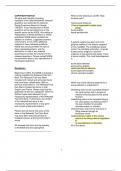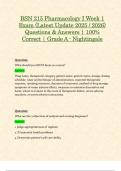Exam (elaborations)
Exam (elaborations) NDEB RELEASED QUSTION BANK 2021 GRDED A (UPDATED 100% CORRECT ANSWERS)
- Institution
- Harvard University
Exam (elaborations) NDEB RELEASED QUSTION BANK 2021 GRDED A (UPDATED 100% CORRECT ANSWERS) A patient experiences pain and some gingival swelling in the anterior segment of the mandible. The mandibular lateral incisor has a shallow restoration, is tender to percussion and gives a positive response...
[Show more]




